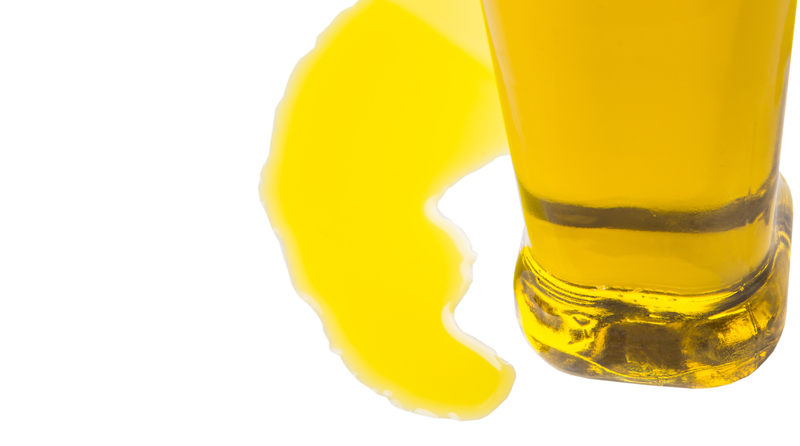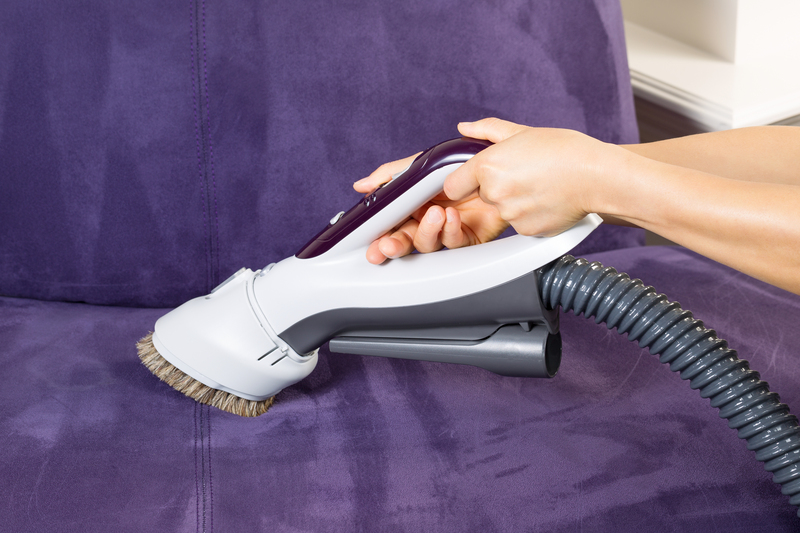Wave Farewell to Grease: Simple Tips for Cleaning Enamel Oven Trays
Posted on 02/09/2025
Wave Farewell to Grease: Simple Tips for Cleaning Enamel Oven Trays
Do your enamel oven trays look like they've survived a culinary battle? Stubborn grease and burnt-on residue can make even the most diligent home cook cringe. But cleaning enamel oven trays doesn't have to be a dreaded chore. With the right methods and a bit of know-how, you can keep your ovenware sparkling, extend its life, and ensure your meals always taste fresh and delicious.
Why Cleaning Enamel Oven Trays Matters
Enamel oven trays are loved for their non-stick nature, durability, and even heat distribution. However, neglecting to clean them properly doesn't just leave them looking unsightly--it can affect cooking performance, transfer old flavors to new dishes, and even shorten the tray's lifespan. Regular grease removal for enamel trays is a must for maintaining kitchen hygiene and ensuring your food always tastes as it should.
Common Problems With Dirty Enamel Trays
- Stubborn Grease and Oil Residue: Leftover oils harden and become difficult to remove.
- Burnt-On Food: Repeated cooking without cleaning causes tough, baked-in patches.
- Unpleasant Odors: Grease and food debris contribute to funky smells in your kitchen and oven.
- Stains and Discoloration: Over time, persistent grime can permanently stain enamel surfaces.

Preparation: What You'll Need Before Cleaning
Before you start scrubbing, gather the right supplies. Cleaning enamel oven trays requires gentle yet effective tools to avoid scratching or damaging the enamel coating.
- Soft sponges or non-abrasive scrubbers
- Baking soda and white vinegar
- Mild dishwashing liquid
- Old toothbrush or soft cleaning brush
- Rubber or latex gloves (to protect your hands)
- Soft microfiber cloths for drying
- Plastic scraper (optional, for tough food debris)
Simple Tips for Cleaning Enamel Oven Trays
1. Act Quickly After Use
The longer you leave grease or food to cool, the harder it will be to remove. As soon as your enamel tray cools to a safe temperature, soak it in warm soapy water. This loosens grease and prevents residue from becoming stubborn.
2. Baking Soda for Gentle Scrubbing
For most standard cleanings, baking soda is an enamel tray's best friend. Sprinkle a generous amount onto the tray, then add just enough water to form a thick paste. Allow it to sit for 15-20 minutes--this breaks down both grease and burnt-on stains.
- Scrub gently with a non-abrasive sponge to lift away grime.
- Rinse thoroughly with warm water to remove all residue.
3. Tackle Tough Grease with Vinegar
If your tray is especially greasy, combine equal parts baking soda and white vinegar for a natural cleaning reaction that breaks up even the most persistent oil stains. Pour vinegar over the baking soda, let it fizz for several minutes, then scrub gently. This is one of the simplest ways to wave farewell to grease on enamel oven trays!
4. Use Dish Soap for Everyday Maintenance
Mild dish soap and hot water are often sufficient for day-to-day cleaning. Use a soft sponge or dishcloth--abrasives can scratch the enamel surface, making future stains cling more stubbornly. For best results, dry the tray with a soft microfiber cloth immediately after washing.
5. Soak Away Burnt-On Food
For burnt-on food debris, fill the tray with hot water, add a generous squirt of dish soap, and let it sit for several hours--or overnight, for seriously stubborn patches. After soaking, use a plastic scraper or an old toothbrush to gently remove loosened remains.
6. Avoid Harsh Chemicals or Abrasives
While it may be tempting to reach for strong oven cleaners, bleach, or steel wool, these can damage the enamel coating and cause it to chip or discolor. Stick to gentler cleaning methods whenever possible to keep your trays looking new.
7. Lemon Juice for Extra Shine
Lemon juice is a safe, natural deodorizer and mild bleaching agent. After cleaning, wipe the tray with a cloth dampened in lemon juice to remove stubborn odors and restore a natural shine to your enamel oven pans.
Deep Cleaning Method for Heavily Soiled Enamel Oven Trays
Sometimes regular cleaning just isn't enough, especially if your trays suffer from years of neglect or frequent high-temperature baking. For a deep clean of enamel baking trays:
- Fill your sink with very hot water and add a quarter cup of baking soda and a good squirt of dish soap.
- Submerge the enamel tray and let it soak for at least eight hours or overnight.
- After soaking, use a non-abrasive sponge to scrub away loosened debris gently.
- For persistent stains, sprinkle more baking soda directly on the tray and scrub in a circular motion.
- Rinse thoroughly, ensuring no residue remains.
- Repeat the process for seriously stubborn patches.
Remember, patience is key! Repeat the baking soda soak if necessary for particularly old or burnt-on grease.
Preventing Future Grease Build-Up on Enamel Oven Trays
Prevention is just as important as cleaning. Here are some practical ways to keep your enamel bakeware and oven trays looking their best and minimize future scrubbing:
- Line trays with parchment paper or aluminum foil before baking to reduce direct contact with greasy foods.
- Clean trays promptly after each use, rather than letting grease harden over time.
- Avoid using sharp or metal utensils that can chip or crack the enamel coating, creating places where grease can accumulate.
- Store trays in a dry place to avoid rust around edges or chips.
- Periodically check for chips and cracks -- if the enamel is damaged, consider retiring the tray, as exposed metal may rust quickly and harbor bacteria.
Frequently Asked Questions About Cleaning Enamel Oven Trays
Can you use oven cleaner on enamel oven trays?
Most commercial oven cleaners are too harsh for enamel-coated trays. They can discolor or damage the enamel, causing it to chip or peel. For long-lasting results, stick to baking soda, vinegar, and dish soap as your safest cleaning options.
How do you remove baked-on grease from enamel trays?
The baking soda paste method, possibly followed by a vinegar soak, is the safest and most effective way to tackle baked-on grease. Let the paste sit for up to an hour for serious stains before gently scrubbing with a non-abrasive pad.
Can enamel trays go in the dishwasher?
Generally, enamel trays are dishwasher-safe. However, repeated dishwashing can dull the surface over time and may not fully remove heavy grease build-up. For the best results, hand wash your trays regularly using the gentle methods outlined above.
Is it safe to use steel wool or scouring pads on enamel?
Steel wool, metal scouring pads, or abrasive powders should be avoided. These can scratch and damage the enamel coating, reducing its non-stick properties and making it more difficult to clean in the future.
Expert Tips: Keeping Enamel Oven Trays Spotless
- Clean immediately after cooking: The sooner you deal with spills and grease, the easier they are to remove.
- Refresh with baking soda monthly: Even if your enamel tray doesn't look dirty, a light monthly scrub with baking soda keeps it odor-free and shiny.
- Dry thoroughly: Always dry your tray completely before storing--moisture can seep into chips or cracks, potentially causing rust.
- Avoid temperature shock: Don't put a hot tray directly into cold water, as this can stress and crack the enamel surface.
Green Cleaning for Enamel Oven Trays
Want to minimize your environmental impact? Green cleaning methods for enamel oven trays use non-toxic, biodegradable substances that won't harm the planet or your family's health. Baking soda, vinegar, and lemon juice are affordable, safe, and incredibly effective alternatives to commercial oven cleaners.
- Baking soda: Tackles grease and stains without abrasive damage.
- White vinegar: Cuts through mineral deposits and dissolves stuck-on food.
- Lemon juice: Natural deodorizer and gentle bleaching agent for shine.

Common Mistakes to Avoid When Cleaning Enamel Oven Trays
- Using abrasive pads or steel wool: These scratch and permanently damage enamel surfaces.
- Letting grease harden for days: Postponing cleaning makes the process much harder.
- Using harsh chemicals: Harsh cleaners can cause discoloration, pitting, or chipping.
- Not soaking stubborn debris: For serious stains, time and patience are your allies--always soak before scrubbing.
- Ignoring chips or cracks: Damaged enamel exposes metal that can rust and harbor bacteria, so replace trays as needed.
Conclusion: Cleaning Enamel Oven Trays Made Easy
With these simple, effective tips, you can wave farewell to grease and restore even the most neglected enamel oven trays to their original luster. By choosing gentle cleaning methods and making prompt cleaning a habit, you'll extend the life of your ovenware, ensure delicious meals, and keep your kitchen in top condition.
A sparkling oven tray doesn't just look good--it's a vital part of food hygiene and culinary success. With just a few pantry staples and these expert tricks, sticky stains, and stubborn grease will be a thing of the past. So, put on your gloves and let your enamel trays shine like new--your future kitchen adventures will thank you!
Still have questions?
Share your tip in the comments or ask your cleaning dilemmas below. For more expert advice on keeping your kitchen sparkling, read our related articles!
Keywords: wave farewell to grease, cleaning enamel oven trays, grease removal for enamel trays, grease on enamel oven trays, deep clean of enamel baking trays, enamel bakeware and oven trays, cleaning enamel ovenware




